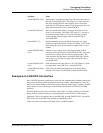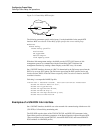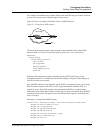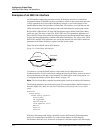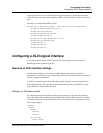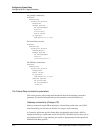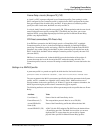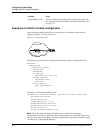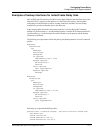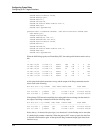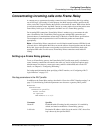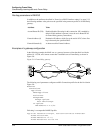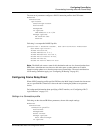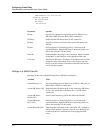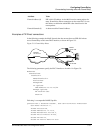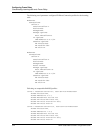
Configuring Frame Relay
Configuring a DLCI logical interface
MAX 6000/3000 Network Configuration Guide Preliminary January 4, 2001 5-17
Examples of backup interfaces for nailed Frame Relay links
On UNI-DTE and NNI interfaces, the MAX issues Status Enquiries that check the state of the
other end of PVC segments on the interface. If a DLCI becomes inactive, and the profile
configuring its nailed interface specifies a backup connection, the MAX uses the backup
connection to provide an alternate route to the other end.
In the sample profiles that follow, the primary interface is a Frame Relay DLCI interface
defined in a profile named
fp7, and the backup interface is another DLCI interface defined in
a profile named
pvc. In this example, the remote IP address of the primary and the backup
connection are different.
The following set of parameters defines the primary and backup interfaces in local Connection
profiles:
Ethernet
Connections
fp7
Name=fp7
Active=Yes
Encaps=FR
IP options
LAN Adrs=10.168.7.9/24
Encaps options
FR Prof=frt2-7
DLCI=18
Telco options
Call Type=Nailed
Session Options
BackUp=
Ethernet
Connections
pvc
Name=pvc
Active=Yes
Encaps=FR
IP options
LAN Adrs=10.168.7.11/24
Encaps options
FR Prof=frt1-7
DLCI=16
Telco options
Call Type=Nailed
Following are comparable RADIUS profiles:
permconn-max1-1 Password="ascend", User-Service=Dialout-Framed-User
User-Name="fp7",
Framed-Protocol=FR,
Framed-Address=10.168.7.9,
Framed-Netmask=255.255.255.0,



